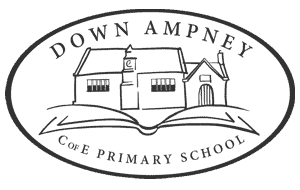
"Teachers know their pupils well and plan to make learning challenging and interesting. Consequently, all groups of pupils, including the most able, make good progress"
Ofsted
DT
Intent
At Down Ampney Primary School, the intent behind our Design Technology curriculum is to provide a progressive and coherent program that inspires and challenges our pupils. Our aim is to develop their creativity, critical thinking, problem-solving skills, and resilience through engaging and purposeful design projects. We aim for our pupils to develop a deep understanding of the design process, including researching, designing, making, and evaluating products, whilst fostering a love for practical and hands-on learning experiences.
Our curriculum is supported by the Design Technology Association and is designed to ensure that pupils are exposed to a wide range of materials, tools, and techniques, allowing them to explore different aspects of design, including structures, mechanisms, textiles, and food technology. We believe in nurturing pupils’ curiosity and encouraging them to take risks, experiment, and learn from their mistakes. By promoting inclusivity and diversity in our design projects, we strive to create a learning environment that celebrates the unique strengths and talents of every child.
Implementation
The implementation of our Design Technology curriculum is rooted in a carefully crafted sequence of lessons that build upon prior knowledge and skills. Teachers use Projects on a Page planning which outlines clear learning objectives, progression pathways, and opportunities for cross-curricular links. We encourage a hands-on approach to learning, where pupils are actively involved in the design process from conception to completion. Projects focus on the six interrelated principles of Design Technology: user, purpose, functionality, design decisions, innovation, and authenticity.
Our school invests in high-quality resources and equipment to support practical learning experiences. We provide regular opportunities for pupils to apply their knowledge and skills in real-life contexts, such as designing nightlights and cooking. Through collaborative projects and peer feedback, pupils learn to work effectively in teams, communicate their ideas, and listen to the perspectives of others.
Assessment in Design Technology is formative and ongoing, with teachers using a range of strategies to gauge pupil progress and identify areas for development. Feedback celebrates achievements and supports pupils in setting challenging but achievable goals for improvement.
Impact
The impact of our Design Technology provision is evident in the progress and achievements of our pupils. Through their engagement in practical design projects, our pupils develop a range of valuable skills, including creativity, problem-solving, resilience, and teamwork. They exhibit a passion for learning and a willingness to take on new challenges, demonstrating a growth mindset and a positive attitude towards overcoming obstacles.
Our pupils’ work showcases a deep understanding of the design process, with evidence of research, planning, experimentation, and reflection embedded in their projects. Design is an integral part of our STEM offer and children have the opportunity to compete in design challenges such as the RIAT STEM challenge, KNEX days and cooking competitions.
They are able to evaluate their work critically, make improvements based on feedback, and articulate their design decisions with confidence and clarity. Our pupils take pride in their achievements and demonstrate a sense of ownership over their learning journey in Design Technology.
Overall, our Design Technology curriculum equips pupils with the skills and knowledge they need to succeed academically, personally, and professionally. By fostering a love for creativity and innovation, we empower our pupils to become lifelong learners who are not afraid to think differently and make a positive impact on the world around them.

